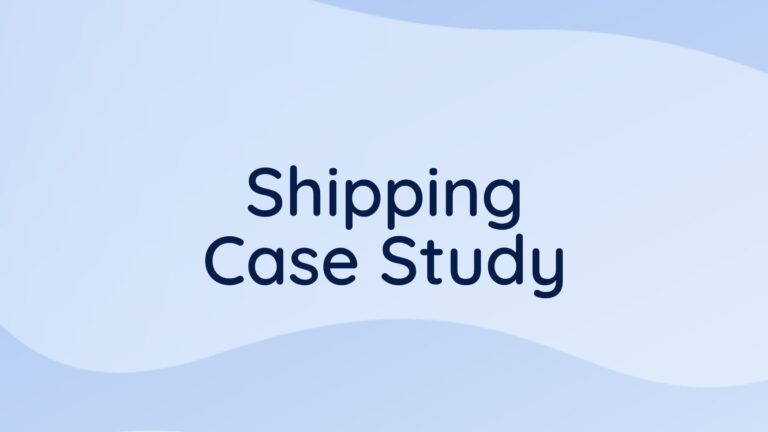
Five Predictions for the Future of Procurement
By Eric Edwards | November 15, 2022
As we move further and further from the effects of a global pandemic, procurement will not revisit the “good old days” of the mid-2010s. Far from it. COVID permanently changed the procurement game.
Winners and losers emerge when historical crises occur. COVID was no different. As many companies struggled over the past three years, the pandemic became an enormous opportunity for global giant Amazon and other companies to capture a much larger share of low-value repeatable purchasing. This left procurement organizations and departments scrambling to find more strategic alternatives to not only survive but carve out their place in an evolving global market.
What’s changed?
Now, CPOs and their procurement teams look to invest in more secure supply chains, addressing increased volatility in consumer demand and responding to the changing ways people work (i.e., the hybrid work model).
Is that all? Did the pandemic already write procurement’s future? No. But COVID did author the introduction to “The Future of Procurement.” Now, it’s up to innovative companies to chart procurement’s future path.
So, we discovered a few things after scouring countless online consulting resources, using hand-me-down dowsing rods, and shaking our professional Magic 8-ball user. First, we learned you are NOT supposed to shake the professional Magic 8-ball user, but the Magic 8-ball instead. Okay, our bad. Bob doesn’t like to be touched, much less shaken. Good to know. Secondly, opinions vary, but there is a consensus among high-dollar consultancies where procurement likely is headed.
The “old way” of thinking about procurement is out
However, before we gaze into the crystal ball stored next to the dosing rods, let’s briefly look at how we got here.
For decades, procurement focused almost solely on finding the lowest cost for goods near manufacturing sites. The global crisis of successive 20th-century world wars solidified a transactional procurement process as countries rushed to secure raw materials to manufacture weapons, equipment, and machinery to power food production and produce consumer goods.
Then, in the 1960s, the practice of competitive bidding became commonplace giving rise to trained procurement professionals. By the 1980s, supplier competition allowed procurement organizations to focus on supplier quality and dependability. This model remained intact for the next three decades, with few exceptions.
Yes, the rise of the internet and digitalization had an impact, but the basic transactional procurement model remained unchanged. Some companies and organizations thought about the end-customer experience and strategic sourcing, but these concepts were more outliers than standard practice.
But then came COVID-19. (Cue ominous music.)
For the intellectually curious, here are a couple of interesting reads about procurement’s history dating back to ancient Greece, China, and those ever-industrious, pyramid-constructing, embalming-fanatical Egyptians:
Five Future of Procurement Predictions Post-COVID
Today, procurement is climbing the corporate ladder and moving beyond the back-office function into desks with daylighting and a more prominent role for their organizations. Admittedly, this is a slow and frustrating ascent for procurement professionals. Most may not be on the board of directors (yet), but the procurement function still needs to make an impact as we move away from the pandemic.
Here are five procurement divinations Una waves its wand at:
1. Driving value more than cost reduction
A business adage states, “You Can’t Save Your Way to Profitability.” Half the procurement professionals reading this just got the heebie-jeebies.
In a recent Accenture article, procurement will elevate its role to have a “more comprehensive and holistic view of value.” Procurement leaders will need to initiate the breaking down of interoffice silos to promote their department’s profile. Additionally, procurement needs to find diverse partners and suppliers aligned with the company’s goals AND “offer a fresh way of thinking.”
This deviates from traditional tactical thinking about suppliers into a new operating model that drives supplier performance to a new level by fostering innovation and integrated relationships.
Likewise, in a CASME blog about why procurement should focus on revenue generation, the future will require greater emphasis on providing up-to-the-minute feedback within the entire procurement and supply chain ecosystem. To achieve revenue generation abilities, procurement needs to develop better real-time technologies shared with solid relationships between suppliers and stakeholders.
A CASME quote says it all, “Procurement needs to…‘bring your brain to the table, not just your seat to the table.’” In other words, proactively seek ways to provide value through innovating your supply chain, not by simple, aggressive cutting costs.
2. A consumer-centric procurement process
The resilience of global supply chains is under attack. Issues ranging from the lingering effects of the pandemic, the war in Ukraine, pricing fluctuations, inflationary pressures, political extremism, aging infrastructure, the energy crisis, and environmental changes have created intense logistical and economic upheavals.
(Wow. Do you need to pour a potent cocktail after that sentence? By all means, take a moment. I’ll do the same.)
As pointed out by KPMG, customer expectations didn’t soften with the pandemic. No, again, thanks to 800-pound gorilla companies, procurement teams will need to adopt an agile, customer-centric approach for future systems and process strategies. If not, it would be virtually impossible for a procurement organization to get up off the mat after being punched by said gorilla.
3. Digital procurement platforms
Already, most purchasing experiences are an online button push, and anything else is a cumbersome part of the process that creates delays and possible human errors. Globally, procurement teams strive as much as possible to live in the cloud with digital, integrated procurement platforms for customers and suppliers. Yet, many still hesitate to make the evolutionary jump.
It is only through a digital process that procurement will realize maximum value with real-time analytics, supply-chain management, and the agility to pivot when necessary quickly.
Digital procurement platforms will unlock the keys to:
- Complete automation,
- Extreme integration,
- And future value-added services.
Through digital procurement platforms, companies will not react by hyperventilation, but embrace the competitive advantage disruption can bring. This will only be achieved when the entire procurement process is digital.
4. A different recipe for talent
In the future, automation will force procurement teams to be leaner and less tactical, even though low-value tactical procurement will remain necessary. Procurement professionals will need to excel not only at one-on-one negotiations but also have high emotional intelligence with the talent to strategize and collaborate with various levels of internal stakeholders and external suppliers.
As KPMG states, “it’s time for procurement leaders…to bring the function to life, work across silos, and shift its reputation from cost-cutting to customer-centric and business enabling.” Future procurement pros will be able to understand opportunities, strategic-level risks, and have the needed soft skills like persuasion and storytelling.
Oh, no! That’s not good news for the procurement team’s old-timer, who earned his reputation by wearing thick-striped neckties, and swearing like a sailor across a landline, hoping to make suppliers cry ugly. Nope, not at all.
5. Greater public transparency for ethical procurement
Environmental, Social and Governance, or ESG, won’t remain marketing purple prose to make people feel good. No, in the future, ESG will be firmly embedded in operations as customers (and Wall Street) pay close attention to a company’s actions.
Procurement and supply chain management have important future roles to play with ESG. A key ESG tenant is the diversity of local suppliers and supplier spend. To meet future challenges, it will be critical for the supplier base to be sustainably scalable. And, a portfolio of diverse, local suppliers will help mitigate future, unforeseen risks.
ESG statements also will not be idealistic promises on corporate websites either. Soon, the public will demand to know (and reward) companies that “walk the talk” of sustainable practices. For companies to achieve their ESG goals, their network of suppliers must have ESG-goal alignment.
According to McKinsey & Company, companies leading the ESG charge today are already enjoying faster growth and higher valuations than their competitors, by a margin of 10 to 20 percent. Additionally, strong ESG credentials drive costs down by 5 to 10 percent through operational efficiencies and waste reduction efforts. Furthermore, ESG can reduce transition risks by helping companies stay ahead of regulatory changes and stakeholder sentiment.
Revisiting the magic 8-ball
Over the next decade, supply chains will strive to be more secure during troubling times, sparked by new technologies to mitigate as much risk as possible. By the 2030s, procurement organizations will likely have their own “geopolitical arms races” and think of the 2010s as ancient history. It won’t take much longer to find out if these predictions come to fruition.
The question is, “Where will your company be?”
After we compiled the five future procurement predictions, we descended again into the Nether Reaches (a.k.a. we rode the elevator to our basement). After two right turns down a flickering fluorescent-lit hallway, we rapped on the door of our professional Magic 8-ball user.
You remember Bob, right? Astonishingly, he was still miffed about us shaking him from the last time. We apologized profusely—again. (SMH. Some people.) With an intensely furrowed brow and dubious look, he listened to our five predictions. It took two handfuls of leftover Halloween candy and a Diet Pepsi from the upstairs breakroom, but Bob eventually agreed to shake the Magic 8-ball. The response popped up through the blue ink, “You may rely on it.”
Well, there you go. Expert validation!
Want a perhaps more reliable source of truth? The future of procurement can begin in 2023 by reaching out to Una. Una’s contracts help differentiate an organization’s supplier base and can introduce you to new relationships while promoting business continuity. Una helps you manage spend categories that are frequently left alone, allowing for the generation of new savings and value you may have overlooked.
Contact our team of sourcing advisors to learn more.
Get new resources weekly!
Related Posts
Questions?
Get in Touch
Do you have questions about group purchasing? Wondering how a group purchasing organization works to save you money, time, and effort?
Una’s team of Sourcing Advisors is here to help. Contact us to learn more.





